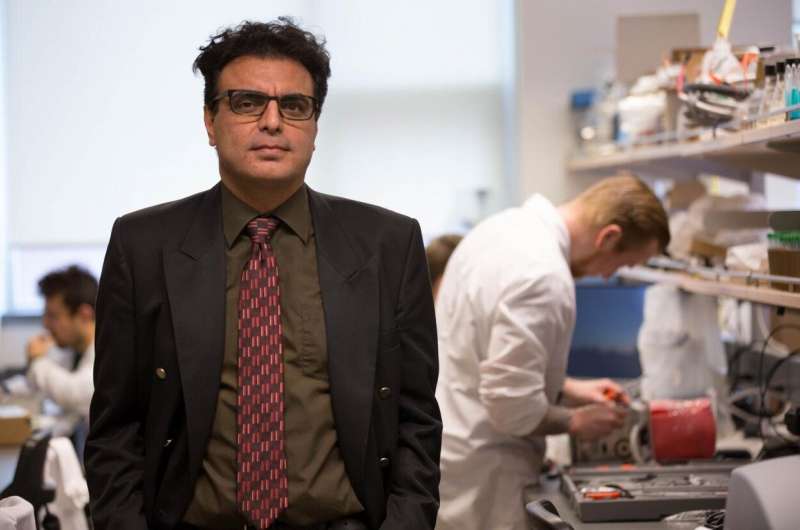
New research coming out of UBC’s Okanagan campus may take the current ‘gold standard’ for heart valves to a new level of reliability.
A team of researchers at UBCO’s Heart Valve Performance Lab (HVPL) has developed a way to improve overall blood flow through the valves, so the design of mechanical heart valves will more closely match the real thing.
“Despite more than 40 years of research, we are still chasing the goal of creating mechanical heart valves that perform consistently and seamlessly inside the human body,” explains Dr. Hadi Mohammadi, an associate professor at the School of Engineering and lead researcher for the HVPL. “The way blood travels through the body is very unique to a person’s physiology, so a ‘one-size fits all’ valve has always been a real challenge.”
Mohammadi, along with doctoral student Arpin Bhullar, has developed an innovative mechanical bileaflet that enables the mechanical heart valve to function just like the real thing. A bileaflet valve—two semicircular leaflets that pivot on hinges—is a mechanical gateway that allows consistent blood-flow and ensures the flow is in one direction.
While developed decades ago and used regularly to improve a patient’s blood flow, artificial valves have never been perfect, says Mohammadi. With existing versions of bileaflets, there is a small risk of blood clots or even a backflow of blood.
The design of the bileaflet is crucial for maintaining blood flow in order to eliminate risk to the patient. Mohammadi believes he’s found a way to fix the problem, by adding a slight twist to the design.
“Our findings show our apex heart valve maintains consistent flow as a result of its breakthrough design—specifically the valve’s curvature which mitigates clotting.”
The initial design was confirmed by Dr. Guy Fradet, head of Kelowna General Hospital’s cardiothoracic surgery program. Mohammadi says it takes decades for innovations in mechanical heart valves before they are used on humans, but he is confident his novel leaflet-shaped valve is the way of the future.
Source: Read Full Article
